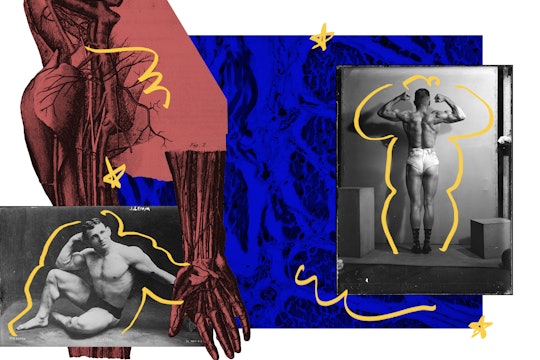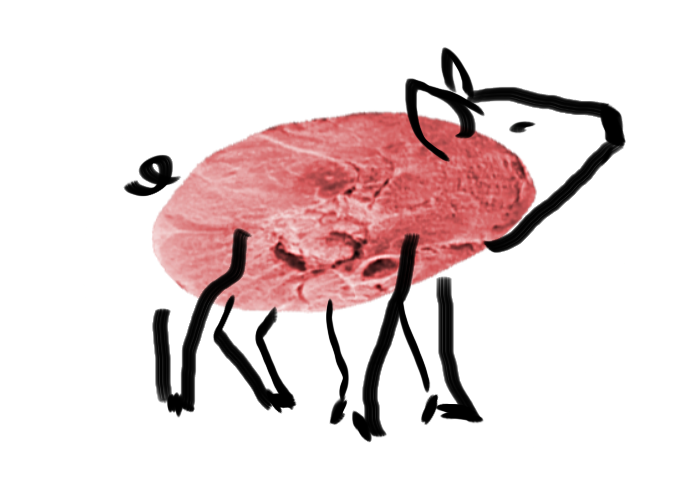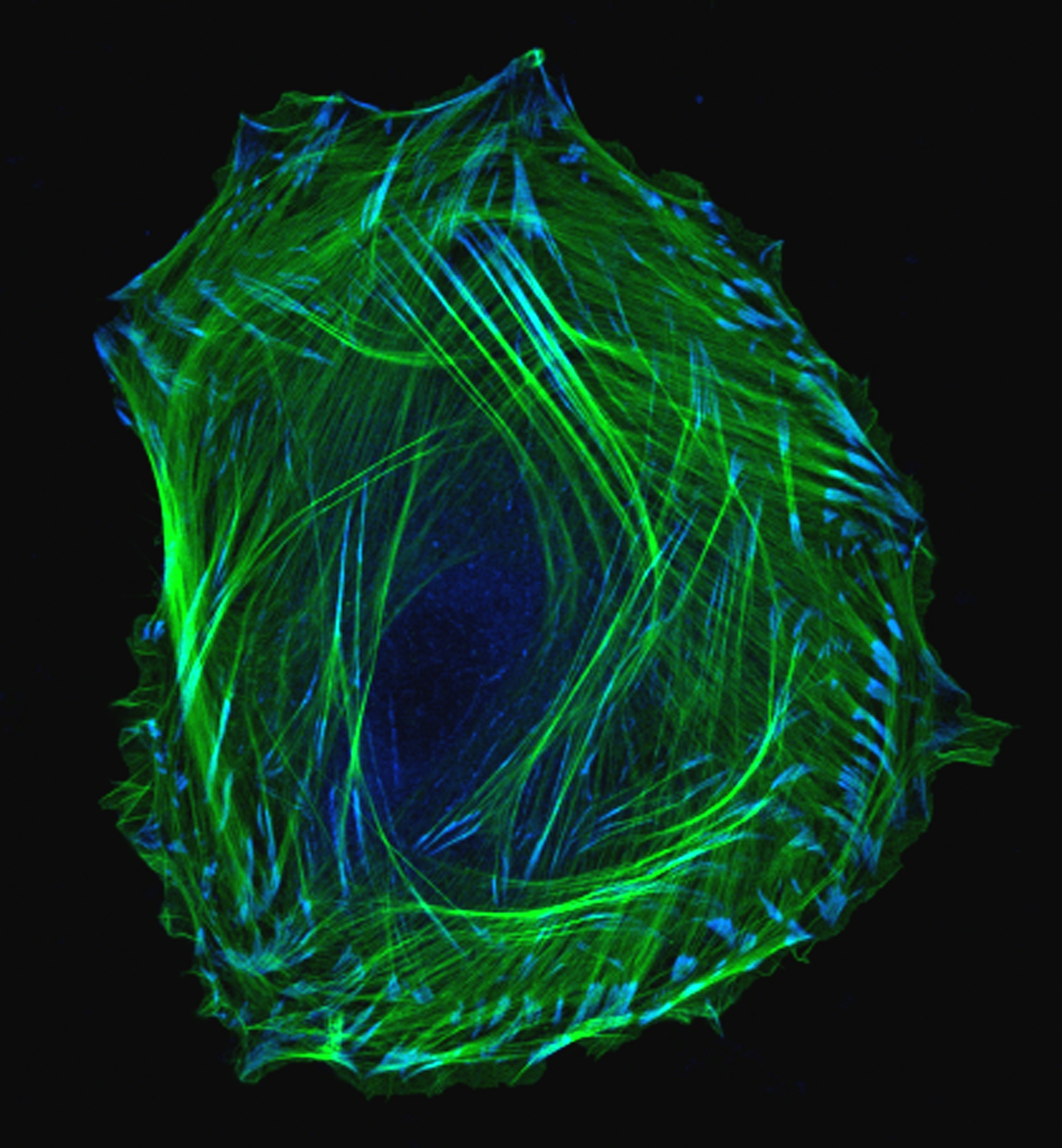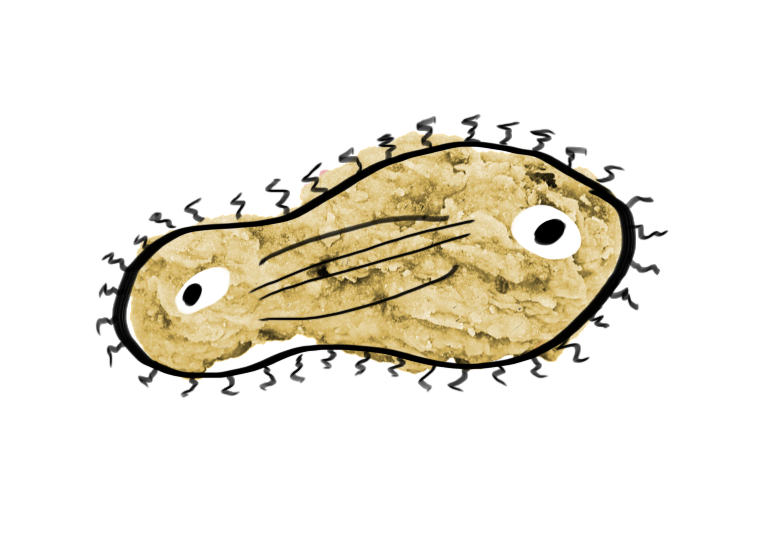
Allan Lasser
That steak is a stretchy biological machine
Sure, meat is made of animal muscles. But what even are muscles?
As jokes about "meatheads" imply, meat is mostly muscle. But what, exactly, is muscle made of, and how does it perform its function? Though you may not think about it when you tuck into a steak, what you're eating is a specialized cellular hyperstructure which allowed the animal to move while it was alive.

Yum, cellular hyperstructure.
Allan Lasser
Muscles are extraordinarily complex biological machines. Made of elastic tissue, there are three main types: cardiac, smooth, and skeletal. Cardiac and smooth muscle groups are not under voluntary control — these muscles are responsible for the contractions in your heart and digestive system, respectively. In contrast, skeletal muscles are the only muscles that can be consciously manipulated. They also happen to be the most important muscle type for meat production.
Skeletal muscles' primary function is to contract, allowing you to make the thousands of small and large movements that get you through your day. To do so, muscles depend on chains of thousands—or tens of thousands—of myofibrils, the basic tube-like unit of a muscle cell. Myofibrils themselves are made from proteins, including actin and myosin, which are organized into thin and thick filaments. When you try to move a muscle, electrochemical signals are sent from the brain to motor neurons. These release a neurotransmitter called acetylcholine, which creates an electric potential across the membrane of the desired muscle's cells, causing calcium ions to flow into them and the filaments to slide. When thick myosin filaments slide along thin actin filament, muscles contract. Coordinating all this to produce movement requires a lot of energy, so muscle cells are also packed with mitochondria, the powerhouse of cells.
Muscles also contain other kinds of tissue. Muscle cells are bundled together and enclosed in a sheath of connective tissue, called the endomysium, which surrounds each individual muscle cell. Woven through the endomysium are nerve fibers and capillaries, which provide sensory feedback and supply the muscles with nutrients from the blood stream. Another common type of structure found in muscles is collagen—an important structural protein which regulates the firmness and elasticity of a given tissue.
As the protein filaments in muscle cells can be very long, muscle cells are organized in an elongated shape. Unlike other cells, muscle cells are produced during a process called myogenesis during neonatal development—which means that, after you're born, you almost never generate new muscle fibers. Instead, existing cells grow in size when the need arises.

An embryonic smooth muscle cell
Muscle generation begins during embryonic development when stem cells—a unique type of cell that can develop into many types of specialized tissue or organ—start to differentiate into myoblasts, which are the precursor to muscle cells. During myogenesis, some of these myoblasts eventually mature into myobtubes, tubular structures with multiple nuclei (ordinarily, most cells only have one nucleus)—while the rest of the myoblasts continue proliferation to protect against future muscle damage. As muscle-generating myoblasts stop their cell division process and align themselves on a tubular axis, neighboring myoblasts start to fuse their cellular membranes, forming a muscle cell, known as myocytes. Even into adulthood, myosatellite cells (stem cells or myogenic cells, those with capability to make muscle) reside in the skeletal muscles of our bodies. Their most important task is muscle regeneration after damage. For example, if you pull a muscle while exercising, these stem cells can act as building blocks to repair the damage, fusing with the injured muscle cell.

Allan Lasser
Muscles, of course, can vary widely in size and strength from person to person. That's because muscle cells grow in size in response to mechanical tension, like regular exercise (although the total number of muscle cells stays the same.) This process is called muscle hypertrophy. It's still unclear how this growth is actually achieved, but there are (at least) two hypotheses: The first is known as "sarcoplasmic hypertrophy," which is where an increase in a carbohydrate called glycogen increases the volume of the muscles' storage areas, known as the sarcoplasmic reticulum. This increases the total volume of the muscle. The second is called "myofibrillar hypertrophy," which is where muscle cells try to adapt to external tension—for example, by exercising, which increases the number and size of myofibrils.
Most likely, both processes occur in parallel. In livestock, the same rules for muscle growth apply. The more animals move and exercise their muscles, the larger their number of muscular fibrils which may be associated with more juiciness and a stronger meat flavor. (An alternate hypothesis suggests there's no such benefit.) But there's an argument that's why the exercised meat from free-ranging cattle has a stronger flavor and texture than meat from fenced cattle, while cooped up chickens produce a tender meat from muscles which were hardly used during their lives.
